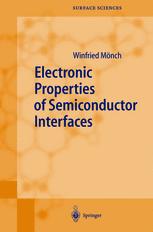

Most ebook files are in PDF format, so you can easily read them using various software such as Foxit Reader or directly on the Google Chrome browser.
Some ebook files are released by publishers in other formats such as .awz, .mobi, .epub, .fb2, etc. You may need to install specific software to read these formats on mobile/PC, such as Calibre.
Please read the tutorial at this link: https://ebookbell.com/faq
We offer FREE conversion to the popular formats you request; however, this may take some time. Therefore, right after payment, please email us, and we will try to provide the service as quickly as possible.
For some exceptional file formats or broken links (if any), please refrain from opening any disputes. Instead, email us first, and we will try to assist within a maximum of 6 hours.
EbookBell Team

4.0
6 reviewsAlmost all semiconductor devices contain metal-semiconductor, insulator-semiconductor, insulator-metal and/or semiconductor-semiconductor interfaces; and their electronic properties determine the device characteristics. This is the first monograph that treats the electronic properties of all different types of semiconductor interfaces. Using the continuum of interface–induced gap states (IFIGS) as the unifying concept, Mönch explains the band-structure lineup at all types of semiconductor interfaces. These intrinsic IFIGS are the wave-function tails of electron states, which overlap a semiconductor band-gap exactly at the interface, so they originate from the quantum-mechanical tunnel effect. He shows that a more chemical view relates the IFIGS to the partial ionic character of the covalent interface-bonds and that the charge transfer across the interface may be modeled by generalizing Pauling’s electronegativity concept. The IFIGS-and-electronegativity theory is used to quantitatively explain the barrier heights and band offsets of well-characterized Schottky contacts and semiconductor heterostructures, respectively.